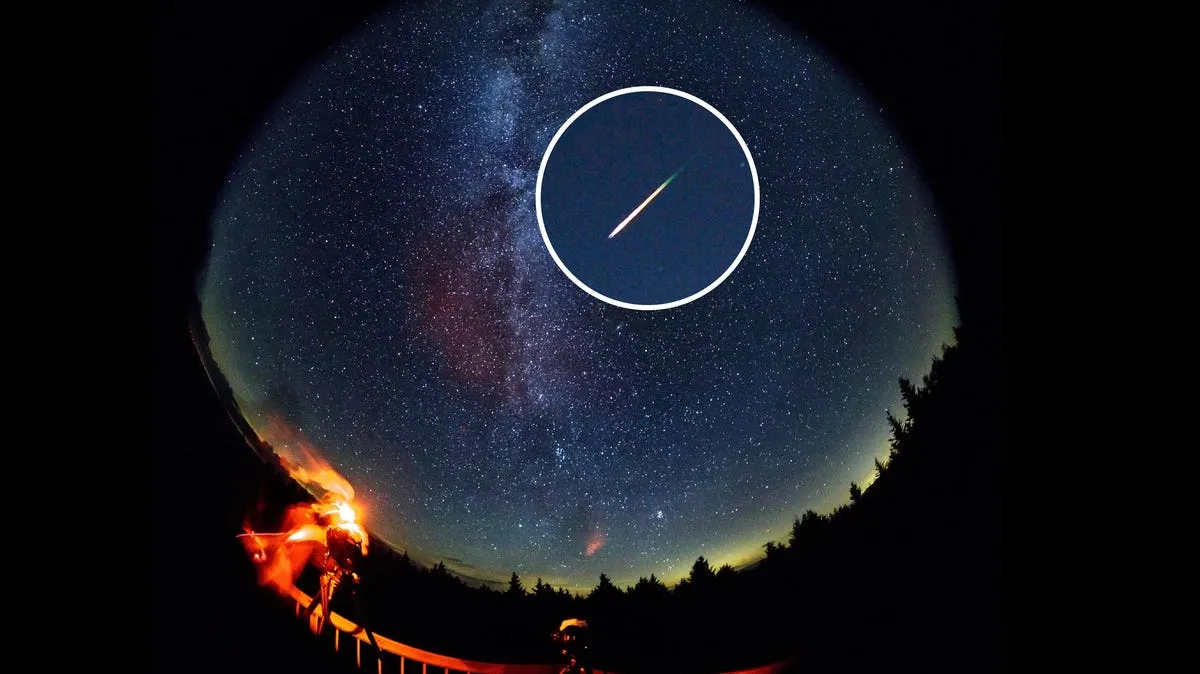
The Perseid meteor shower, renowned as one of the most spectacular astronomical events of the year, delights stargazers with its dazzling display of bright meteors and colorful fireballs. According to NASA, this annual event is a must-see for astronomy enthusiasts and casual observers alike. However, this year's peak activity faced a challenge: a bright waning gibbous moon, which followed closely after a full moon. This lunar brightness is expected to significantly reduce the visibility of the meteors, potentially dampening the experience by up to 75%, as noted by the American Meteor Society.
Due to these conditions, observers might have only spotted approximately 10 to 20 meteors per hour, a stark contrast to the typical 50 to 100 meteors that one might expect during the peak of the Perseid meteor shower. Additionally, Ohio's unpredictable weather further complicated the viewing for many eager stargazers. But do not despair! There is still time to witness this stunning spectacle. Read on to discover how and when to catch the best views of the Perseid meteor shower.
The Perseid meteor shower peaked on the evenings of August 12 and 13, but it remains visible until August 23. The best times to observe the meteors are typically after midnight and just before dawn. However, experts recommend heading outside as early as 10 p.m. ET to maximize your viewing experience, according to the Weather Channel. In rural areas, stargazers can witness an impressive 50 to 75 meteors per hour. To catch the best view, look towards the northeast and focus on the constellation Perseus.
Fortunately, the weekend weather forecast in Ohio looks promising for meteor viewing, as reported by the National Weather Service for Akron, Columbus, and Cincinnati. In the Akron area, clear skies are expected on the night of August 15, transitioning to partly cloudy conditions, with a chance of storms on Saturday and Sunday nights (August 16 and 17). Partly cloudy skies are likely to persist into Monday night (August 18).
In Columbus, the forecast indicates mostly clear skies tonight (August 15) with some cloud cover on Saturday night (August 16). A 30% chance of rain is forecast, followed by clearer skies on Sunday night (August 17) and returning clear conditions on Monday night (August 18). Meanwhile, Cincinnati is expected to enjoy mostly clear skies throughout the weekend, with the exception of a slightly cloudier night on Sunday (August 17).
For those looking for the best spots in Ohio to experience the Perseid meteor shower, the International Dark Sky Places (IDSP) program has identified two noteworthy locations:
Geauga Observatory Park: Located in Montville Township, Geauga County, this park was designated as a dark sky park in 2011. Home to the Nassau Observatory, which was relocated from Cleveland in 1957 due to light pollution, it offers an excellent viewing experience for stargazers. Fry Family Park: Situated in Magnolia, about 10 miles south of Canton, Fry Family Park is recognized as an IDSP-certified urban dark sky area, making it a great spot for observing the night sky, even in proximity to a city.Additionally, other recommended dark sky destinations in Ohio include:
Burr Oak State Park: This park is located near a village with a small population, minimizing light pollution and enhancing visibility of the night sky. Stonelick State Park: Known for some of the darkest skies in Ohio, it serves as a popular destination for stargazers from the Cincinnati area. Wayne National Forest: Specifically, the Lamping Homestead Recreation Area is often cited as the darkest site in Ohio's only national forest, making it an ideal location for viewing the Perseids.The Perseid meteor shower originates from the Comet Swift-Tuttle, discovered in 1862 by American astronomers Lewis Swift and Horace Tuttle. This well-known meteor shower occurs when debris from the Swift-Tuttle comet interacts with Earth’s atmosphere, creating stunning meteor trails. Among various meteor showers, the Perseids and Geminids are typically regarded as the most active and visually striking, with the former being more easily observed during warm August nights as opposed to the colder December days when the Geminids peak.
To enhance your experience while viewing the Perseid meteor shower, consider the following tips from EarthSky:
Choose the right location: Find a spot away from city lights, locate the radiant in the sky, and settle in for the show. Minimize light exposure: Allow your eyes to adjust to the darkness, which may take 15 to 20 minutes. Dress appropriately: Bring blankets or a camping chair to ensure a comfortable viewing experience.With these tips in mind, you’re well-prepared to enjoy the enchanting spectacle of the Perseid meteor shower. Happy stargazing!